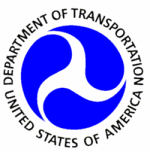But Decreases Not As Significant As In Previous
Months
The nation's largest airlines reported four flights in September
with tarmac delays of more than three hours, down from six flights
in September 2009, with only a slight increase in the rate of
canceled flights, according to the Air Travel Consumer Report
released Tuesday by the U.S. DOT.

Data filed with the Bureau of Transportation Statistics (BTS)
showed the only tarmac delays longer than three hours reported in
September by the 18 airlines that file on-time performance data
with DOT involved delays caused by weather in New York and
Philadelphia on Sept. 22. September was the fifth full month of
data since the new aviation consumer rule went into effect on April
29. There have been only 12 total tarmac delays of more than three
hours reported from May through September this year, compared to
535 during the same five-month period of 2009. BTS is a part of
DOT's Research and Innovative Technology Administration (RITA).
The largest carriers canceled 0.9 percent of their scheduled
domestic flights in September, up from the 0.6 percent cancellation
rate of September 2009. They posted a 1.0 percent cancellation rate
in August 2010.
The new tarmac delay rule prohibits U.S. airlines operating
domestic flights from permitting an aircraft to remain on the
tarmac for more than three hours without deplaning passengers, with
exceptions allowed only for safety or security or if air traffic
control advises the pilot in command that returning to the terminal
would disrupt airport operations. The Department will investigate
tarmac delays that exceed this limit.
The monthly report also includes data on on-time performance,
chronically delayed flights, flight cancellations and the causes of
flight delays filed with the Department by the reporting carriers.
In addition, it has information on airline bumping, reports of
mishandled baggage filed by consumers with the carriers, and
consumer service, disability and discrimination complaints received
by DOT's Aviation Consumer Protection Division.
This report also includes reports of incidents involving pets
traveling by air, as required to be filed by U.S. carriers.

The reporting carriers recorded an overall on-time arrival rate
of 85.1 percent in September, down from the 86.2 percent on-time
rate of September 2009 but up from August 2010's 81.7 percent.
The carriers filing on-time performance data reported that .0600
percent of their scheduled flights had tarmac delays of two hours
or more, up from .0400 percent in August. There were four flights
with tarmac delays of more than three hours in September.
At the end of September, there was only one flight that was
chronically delayed - more than 30 minutes late more than 50
percent of the time - for two consecutive months. There were no
chronically delayed flights for three consecutive months or more. A
list of flights that were chronically delayed for a single month is
available from BTS.
The carriers filing on-time performance data for the month
reported that 4.81 percent of their flights were delayed by
aviation system delays, compared to 5.07 percent in August; 4.60
percent by late-arriving aircraft, compared to 6.42 percent in
August, 3.99 percent by factors within the airline's control, such
as maintenance or crew problems, compared to 5.16 percent in
August; 0.41 percent by extreme weather, compared to 0.46 percent
in August; and 0.02 percent for security reasons, compared to 0.04
percent in August. Weather is a factor in both the extreme-weather
category and the aviation-system category. This includes delays due
to the re-routing of flights by the FAA in consultation with the
carriers involved. Weather is also a factor in delays attributed to
late-arriving aircraft, although airlines do not report specific
causes in that category.
Data collected by BTS also show the percentage of late flights
delayed by weather, including those reported in either the category
of extreme weather or included in National Aviation System delays.
In September, 34.53 percent of late flights were delayed by
weather, down 0.17 percent from September 2009, when 34.59 percent
of late flights were delayed by weather, and down 1.54 percent from
August when 35.07 percent of late flights were delayed by
weather.
 ANN's Daily Aero-Linx (04.15.24)
ANN's Daily Aero-Linx (04.15.24) Classic Aero-TV: 'No Other Options' -- The Israeli Air Force's Danny Shapira
Classic Aero-TV: 'No Other Options' -- The Israeli Air Force's Danny Shapira Aero-News: Quote of the Day (04.15.24)
Aero-News: Quote of the Day (04.15.24) Airborne 04.16.24: RV Update, Affordable Flying Expo, Diamond Lil
Airborne 04.16.24: RV Update, Affordable Flying Expo, Diamond Lil ANN's Daily Aero-Term (04.16.24): Chart Supplement US
ANN's Daily Aero-Term (04.16.24): Chart Supplement US




